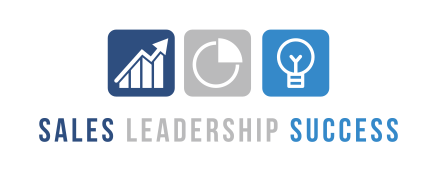Mastering the Art of the Sales Call: A Guide for Sales Managers

The Pitch
The initial moments of a sales call can set the tone for the entire conversation. A well-started call can pave the way for a successful sales pitch, while a poorly executed beginning can doom the interaction from the start. This article will delve into the strategies that can transform the start of a sales call from a potential stumbling block into a stepping stone for success.
Say: Here's my agenda for today:
Outlining the agenda at the beginning of a call is a powerful way to establish control and set expectations. It's a strategy that not only demonstrates professionalism but also shows respect for the prospect's time. By clearly stating the purpose and structure of the call, you're effectively laying down a roadmap for the conversation. This roadmap serves multiple purposes: it provides a sense of security for the seller, knowing they have a clear path to follow; it offers the buyer a transparent view of what to expect, allowing them to prepare their thoughts and questions accordingly; and it sets a collaborative tone, indicating that this call is a mutual exploration rather than a one-sided pitch. A well-articulated agenda is a sign of preparation. It shows that the seller has thought about the call in advance and has a clear objective in mind. It's a signal to the buyer that this time has been considered valuable even before the call began, which can increase their engagement and interest. Furthermore, by outlining the agenda, the seller opens the door to customization. They can tailor the conversation to the buyer's needs and interests, making it more relevant and impactful.
Share a little about what we do
This step is about concisely conveying the value proposition of your product or service. It's not just about what you sell, but about the problems you solve and the benefits you offer. This part of the conversation is crucial because it's the first substantive content the buyer hears. It's your chance to make a strong first impression and to frame the rest of the conversation in the context of the buyer's needs and interests. This is not the time for a long-winded explanation; it's the time for a targeted, compelling statement that piques the buyer's curiosity and sets the stage for a deeper exploration of how your offering can help them. It's about striking the right balance between being informative and being succinct. You want to give the buyer enough information to understand why they should listen, but not so much that you overwhelm them or preempt the detailed discussion that should follow. This step is also about differentiation. It's your opportunity to highlight what makes your offering unique and why it's worth the buyer's time to learn more.
Ask you a few questions about your business
Asking questions about the buyer's business is a fundamental part of any sales call. It shows that you're not just there to sell something; you're there to solve a problem or fulfill a need. By asking questions, you're gathering the information you need to tailor your pitch to the buyer's specific situation. This step is about discovery. It's your chance to learn about the buyer's challenges, goals, and priorities. It's a chance to understand the context in which your product or service could be used and to identify the key drivers that will influence the buyer's decision. It's also about engagement. By asking questions, you're inviting the buyer to participate in the conversation. You're giving them a voice and showing that you value their input. This can increase their investment in the conversation and their interest in what you have to say. Furthermore, the questions you ask can demonstrate your expertise and insight. They can show that you understand the industry and the common challenges that businesses face. They can position you as a consultant and advisor, not just a salesperson.
Give you a demo / walk you through our process
A demo or walkthrough is a tangible demonstration of your offering's value. It's a chance to show, not just tell, what you can do for the buyer. This step is about making the abstract concrete. It's about giving the buyer a clear, visual understanding of how your product or service works and what it can do for them. It's also about personalization. By tailoring the demo or walkthrough to the buyer's expressed needs and interests, you're showing that you've been listening and that you understand what they're looking for. This can make the demonstration more impactful and memorable. Additionally, this step is interactive. It's a chance for the buyer to see the product or service in action and to ask questions in real-time. This interaction can be a powerful way to build rapport and to address any concerns or objections that the buyer might have. It's also an opportunity to highlight the features and benefits that are most relevant to the buyer, making the value proposition even more compelling.
Then we can decide whether we should keep talking
This statement is about mutual qualification. It's a recognition that not every call will lead to a sale, and that's okay. By framing the conversation as a mutual decision, you're showing respect for the buyer's autonomy and judgment. This approach can reduce the pressure that buyers often feel during sales calls, making them more open and receptive to what you
have to say. It's also a statement of confidence. It shows that you believe in the value of your offering and that you're looking for a good fit, not just a quick sale. This can increase the buyer's trust in you and in your product or service. Furthermore, this step sets the stage for a natural progression of the conversation. It's a transition point that moves the call from exploration to decision-making. It's a chance to summarize what's been discussed, to reinforce the key points, and to outline the next steps if both parties agree to move forward.
Ask: Does that sound good?
Asking for the buyer's agreement is a simple but powerful way to gain their buy-in. It's a verbal handshake that can solidify the structure and flow of the call. By asking for their agreement, you're not just seeking their permission to proceed; you're inviting them to commit to the conversation. This question is about collaboration. It's a way to ensure that the buyer is on board with the agenda and that they feel a sense of control over the conversation. It's a way to make the call more of a dialogue and less of a monologue. It's also about validation. By asking if the agenda sounds good, you're showing that you value the buyer's opinion and that you're willing to adjust the conversation to meet their needs. This can increase their satisfaction with the call and their willingness to engage with what you have to say.
Ask: Is there anything you want to add?
Inviting the buyer to contribute to the agenda is an inclusive gesture that can greatly enhance the effectiveness of the call. It shows that you're not just there to push your own agenda; you're there to address the buyer's concerns and interests. This question is about openness. It's a way to demonstrate that you're flexible and responsive and that you're prepared to go beyond your standard pitch to meet the buyer's unique needs. It's also about discovery. By asking what the buyer wants to add, you're allowing them to bring up issues or topics that you might not have anticipated. This can provide valuable insights into their priorities and decision-making criteria. Furthermore, this question is about empowerment. It gives the buyer a sense of ownership over the conversation, which can increase their engagement and investment in the outcome. It's a way to make the call more of a partnership and less of a sales pitch.
Repeat what they said and write it down.
Repeating and noting the buyer's contributions is a sign of active listening and respect. It's a way to confirm that you've understood what they've said and that you take their input seriously. This step is about validation. It shows that you're not just going through the motions; you're genuinely interested in what the buyer has to say. It's also about accuracy. By repeating and writing down the buyer's points, you're reducing the risk of misunderstandings or miscommunications later in the call. Furthermore, this step is about building rapport. It's a way to create a connection with the buyer by showing that you're engaged and attentive. It's a way to make the conversation more personal and more meaningful.
So What?
The start of a sales call is a critical moment that can influence the entire trajectory of the sales process. By following the steps outlined above, sales managers can coach their teams to begin calls with confidence, clarity, and a customer-centric focus. These strategies are not just about making a good first impression; they're about laying the groundwork for a productive and positive relationship with the buyer. They're about creating an environment where the buyer feels heard, understood, and valued. And they're about establishing the seller as a credible, trustworthy, and consultative partner. By starting calls in this way, sales managers can help their teams to increase their success rates and to build stronger, more lasting relationships with their customers.
Next Steps
✅ Outline call agendas in advance.
✅ Practice concise value statements.
✅ Develop insightful questions.
✅ Customize demos for relevance.
✅ Confirm buyer's agenda items.
✅ Document key points immediately.
Closed Won!
Starting a sales call with a clear and collaborative agenda can significantly impact the outcome. It's about more than just following a script; it's about engaging with the buyer in a way that is respectful, informative, and responsive. What have you done that worked, what are you trying to help level up your reps and make you the Sales Leader you wanted to work for? Leave a comment or question below, let's help each other, and our reps move those deals to "Closed Won!"
